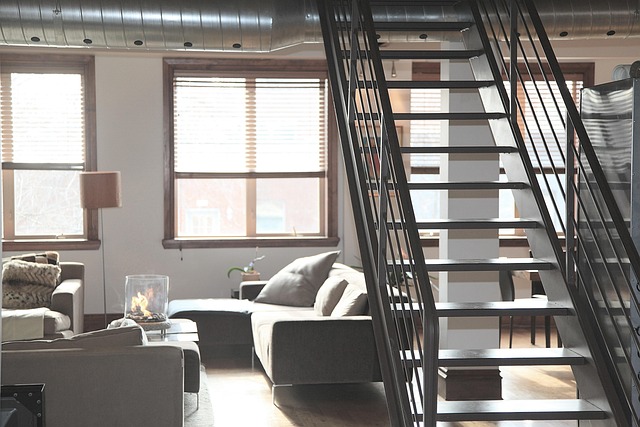DIY home renovations can be fraught with costly mistakes, from budgeting miscalculations and permit oversights to measurement errors and unsafe contractor hires. Skipping critical planning phases leads to budget overruns, legal issues, structural problems, and safety risks, costing homeowners billions annually. This article highlights common DIY renovation errors, emphasizing the importance of comprehensive pre-project planning to avoid these pitfalls and ensure a smoother home improvement experience.
Skipping Planning in Home Improvement: A Recipe for Disaster
Many homeowners attempt DIY renovations, but jumping into projects without proper planning can lead to costly mistakes. This article explores the common pitfalls that often arise when skipping the crucial planning phase. From budget overruns and permit neglect to hiring unlicensed contractors, we’ll uncover the hidden dangers. Learn how initial oversights can transform into major renovation headaches, highlighting the importance of preparation for a successful home improvement journey.
Understanding Common Home Improvement Planning Mistakes
Many homeowners embark on home improvement projects with enthusiasm, only to find themselves ensnared in a web of planning mishaps. Common home improvement mistakes often arise from a lack of forethought and preparation, leading to significant DIY renovation errors and an unpleasant remodeling experience. One of the most critical aspects that tend to be overlooked is permit requirements; skipping permits can result in costly fines and delays during construction.
Budgeting is another area where homeowners commonly stumble, often overestimating their financial capabilities or failing to account for unforeseen expenses. Hiring unlicensed contractors is a dangerous pitfall, as it may compromise the project’s quality and your safety. Additionally, measurement mistakes in DIY projects are prevalent, especially with complex renovations, leading to materials wastage and potential structural issues. Being aware of these common renovation oversights can help prevent significant setbacks and ensure a smoother home improvement journey.
– Overview of DIY renovation errors and common pitfalls during remodeling
Many well-intentioned do-it-yourself (DIY) enthusiasts often find themselves entangled in a web of problems when they embark on home renovation projects without proper planning. DIY renovation errors can range from minor setbacks to significant, costly mistakes. One of the most common pitfalls is budget overrun; impulsive purchases and unforeseen expenses can quickly turn a manageable project into a financial burden. Skipping the essential step of obtaining permits can lead to legal issues and potential fines, causing delays and additional stress.
Measurement mistakes are another frequent oversight, especially for those without professional training. Poor measurements can result in purchasing the wrong materials or having to return items, adding time and expense to the project. Hiring unlicensed contractors is also a risky move; it may save time but could compromise the quality of work and leave you vulnerable to exploitation. These common renovation oversights can be avoided with a simple, comprehensive planning phase, ensuring a smoother, more successful DIY home improvement journey.
– How home project planning errors lead to bigger issues
Many homeowners make the mistake of thinking that skipping the planning phase in their home improvement projects will save time and money. However, this often leads to a cascade of issues further down the line. Home project planning errors can manifest as anything from budget overrun mistakes to common renovation oversights, such as forgetting to obtain necessary permits or hiring unlicensed contractors. These oversights can cause delays, increased costs, and even structural damage if not addressed properly from the outset.
Moreover, measurement mistakes in DIY renovations are a significant source of problems. Inaccurate measurements can result in materials being ordered incorrectly, leading to costly returns and reorders. Additionally, poor planning often ignores unforeseen challenges like complex wiring or unexpected structural issues hidden behind walls, which can significantly complicate projects and drive up expenses.
Financial Pitfalls: Budget Overrun and Permits
When diving into a home improvement project, one of the most significant mistakes homeowners make is skipping the planning phase. This often leads to financial pitfalls, with budget overruns being a common issue. Without a solid plan, it’s easy for costs to escalate quickly as unforeseen expenses arise. For instance, a simple DIY renovation might turn into a costly ordeal if measurement mistakes are made, leading to the need for more materials than anticipated.
Additionally, forgetting to obtain necessary permits can result in hefty fines and delays. Skipping permits often occurs when homeowners attempt to save money by hiring unlicensed contractors or tackling complex tasks without professional knowledge. This not only poses safety risks but also has legal implications. Common renovation oversights like these contribute to the $40 billion annual cost of home improvement mistakes, highlighting the importance of thorough planning for any do-it-yourself project.
While the allure of skipping the planning phase in home improvement projects may seem appealing to DIY enthusiasts, it’s crucial to remember that proper preparation is key. Ignoring essential steps like detailed planning and obtaining necessary permits can lead to significant financial setbacks, such as budget overruns, and even legal issues. Avoiding common renovation oversights, including measurement mistakes and hiring unlicensed contractors, requires a thoughtful approach. By understanding DIY renovation errors and the potential consequences of home project planning failures, you can ensure a smoother, more successful remodeling experience.
